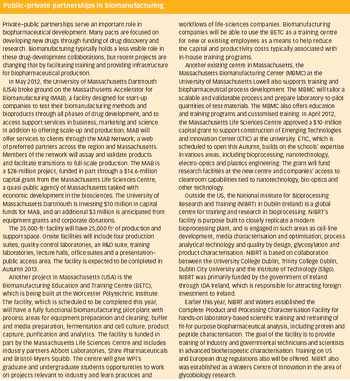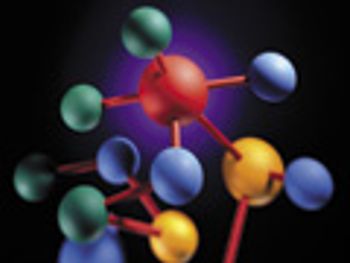
New guide outlines potential product life-cycle approaches to the change-management system of a pharmaceutical quality system.
Patricia Van Arnum was executive editor of Pharmaceutical Technology.

New guide outlines potential product life-cycle approaches to the change-management system of a pharmaceutical quality system.

Peptides and related technologies to are starting to improve production.

Although representing a small part of overall drug development, peptides and related technologies to improve their production are making inroads.

GlaxoSmithKline tenders offer of $13.00 per share in an unsolicited bid despite an earlier rejection by Human Genome Sciences.

The potential of single-cell genomics took a step forward recently with the announcement by The Broad Institute and Fluidigm Corporation of a new research center focused on developing research methods and discoveries in mammalian single-cell genomics.

Sanofi has received FDA and EMA approval for expansion of fill and finish operations for alglucosidase alfa.

Drug shortages, particularly those for sterile injectable drugs, took center stage last year. In response, industry and the federal government, including FDA,

Clinical research organizations see reform in clinical-trial process, including the establishment of chief innovation officer at FDA.

Industry leaders share their perspectives on how the pharmaceutical industry is and can further advance sustainability.

The company provides progress made in 2011 and future environmental objectives.

The Obama administration details five strategic imperatives to drive bioscience research as a means of economic growth.

Targeted polymeric nanoparticles are an important vehicle for controlling and targeting dosing of chemotherapeutic agents.

Advances in palladium-catalyzed hydrogenation, visible-light photocatalysis, and chemocatalyisis for heterocycles are some recent developments.

Industry, the public sector, and individuals can play an important role in creating solutions.

In attending the exhibitions and conference sessions at Interphex 2012 this week in New York, we gain a pulse on the current and future state of pharmaceutical manufacturing.

Advances in palladium-catalysed hydrogenation, visible-light photocatalysis and improved chemocatalytic approaches for making heterocyclic compounds are some recent industry developments.

In a move designed to increase its international presence, Watson Pharmaceuticals has agreed to acquire Actavis for EUR 4.25 billion ($5.6 billion).

The Obama Administration released last week the National Bioeconomy Blueprint. The report outlines steps that federal agencies will take to drive the bioeconomy.

A new report by FDA details the strategies, programs, and other activities the agency is using to address the rise of imported pharmaceutical products and APIs.

Last week Human Genome Sciences (HGS) rejected GlaxoSmithKline’s (GSK) unsolicited $2.59 billion bid for HGS or $13 per share.

Company makes bolt-on acquisition to enhance position in gout marketplace.

Researchers at the Massachusetts Institute of Technology (MIT) recently developed nanoparticles that can be controllably triggered to synthesize proteins.

Generic-drug incursion and reduced demand contribute to modest gains.

Sterility assurance is a critical component in the planning and manufacturing of pharmaceutical products.

On Mar. 29, 2012, the Generic Pharmaceutical Association reiterated its call for Congress to move forward with user-fee proposals for generic drugs and biosimilar products.

A new UN organization focuses on improving the delivery of essential health supplies, promoting new technologies and products, strengthening regulatory frameworks, and enhancing financing mechanisms.

The manufacturing capacity-sharing model in biologics between Merck & Co. and MedImmune LLC ushers in a new paradigm of co-opetition.

The decision by the Indian patent authorities to issue a compulsory license for a generic version of a Bayer anticancer drug engenders debate.

Pharmaceutical Technology's annual survey on equipment and machinery reveals the spending levels and type of spending made in 2011 and planned for 2012.

Contract API manufacturers and fine-chemical producers roll out capacity and service expansions.